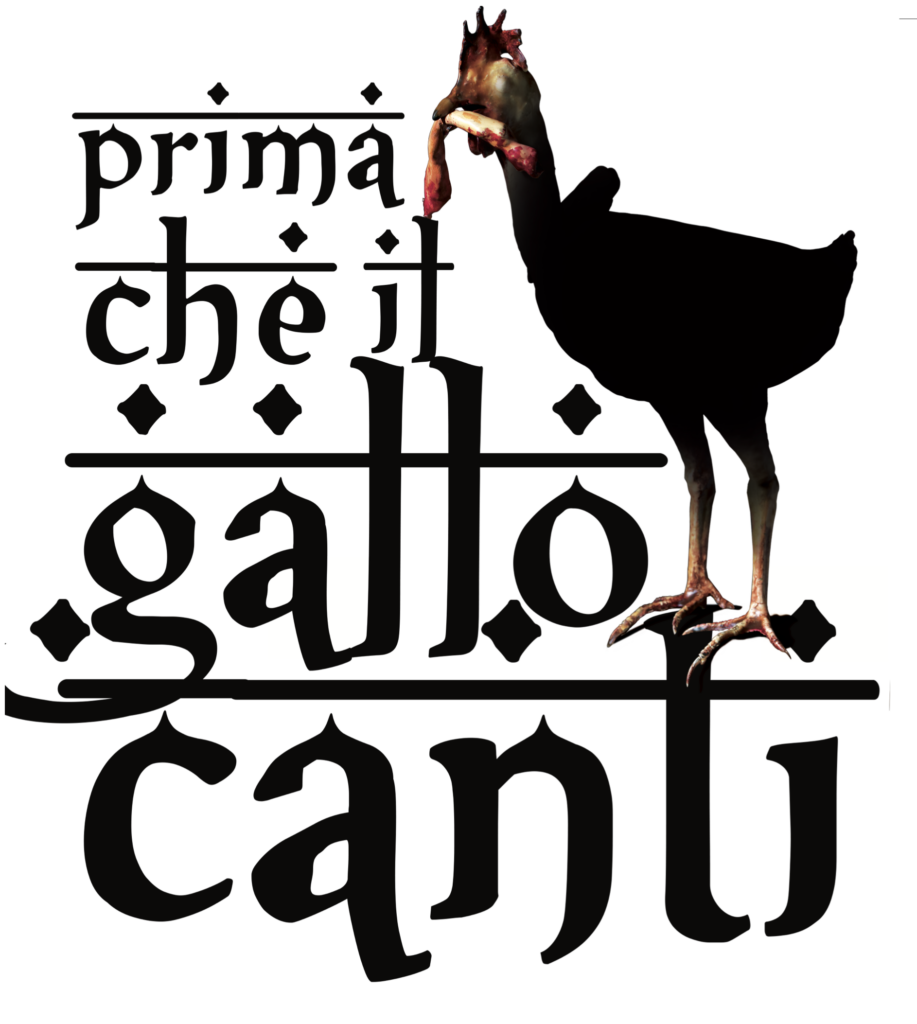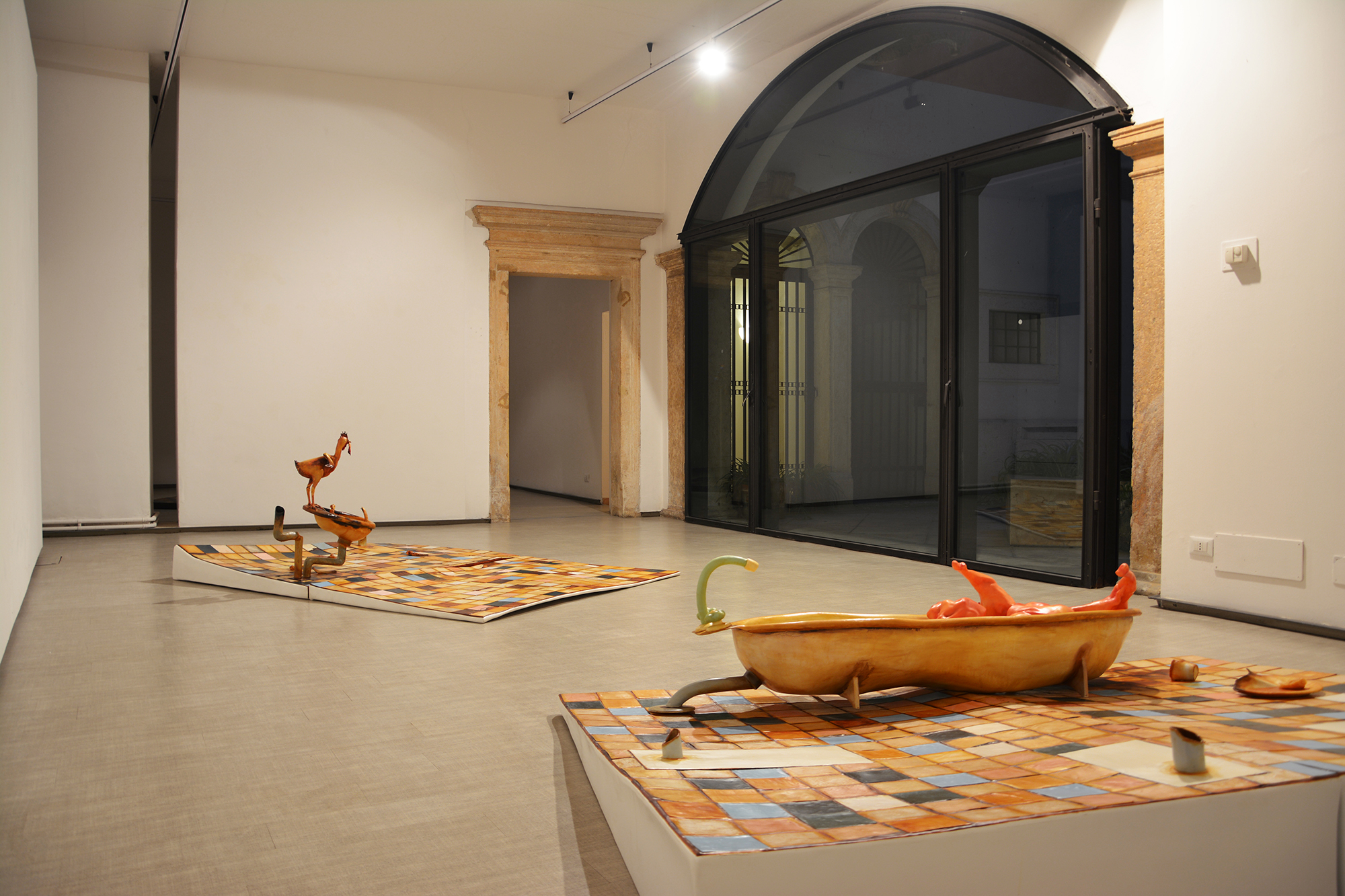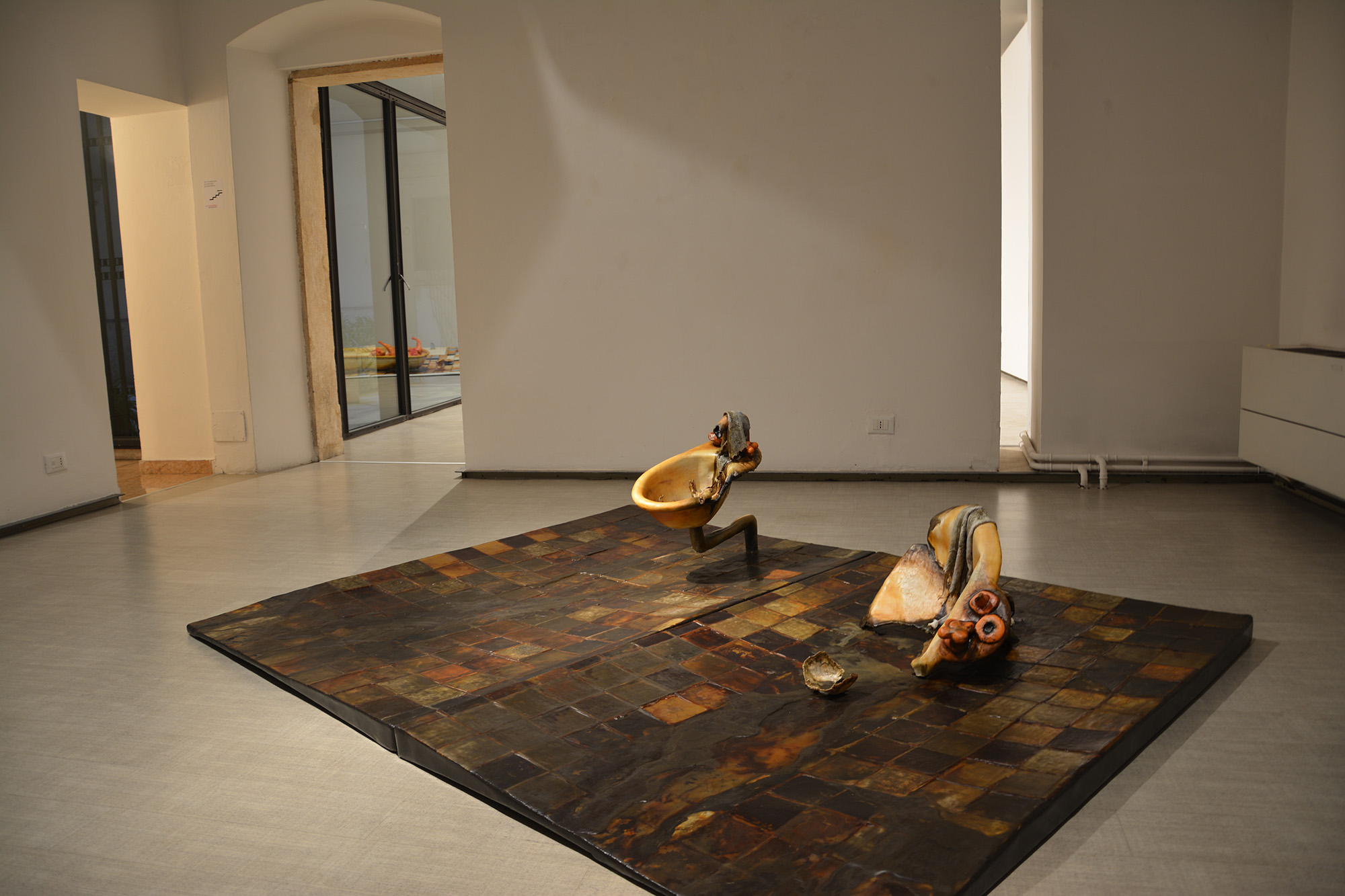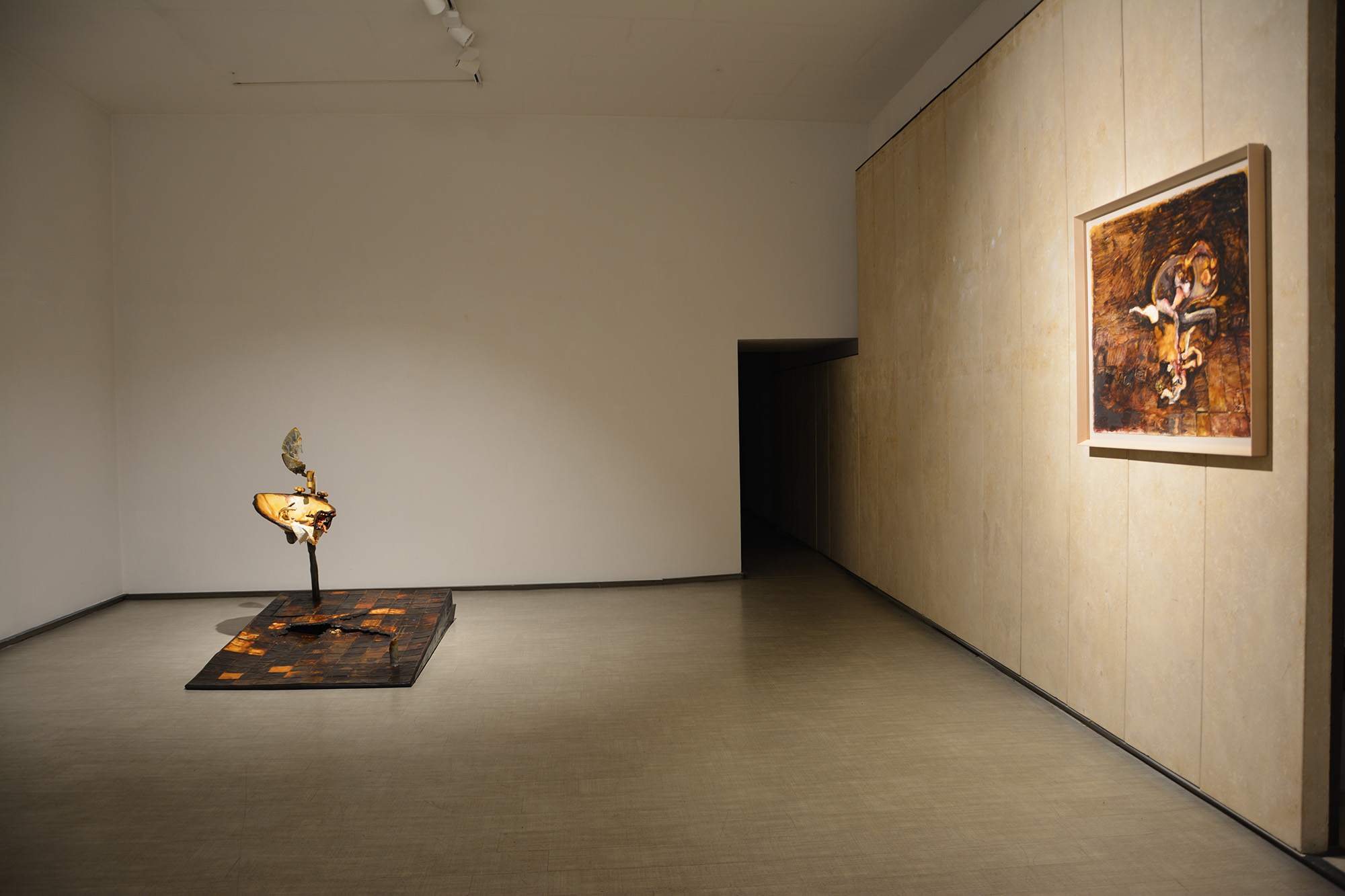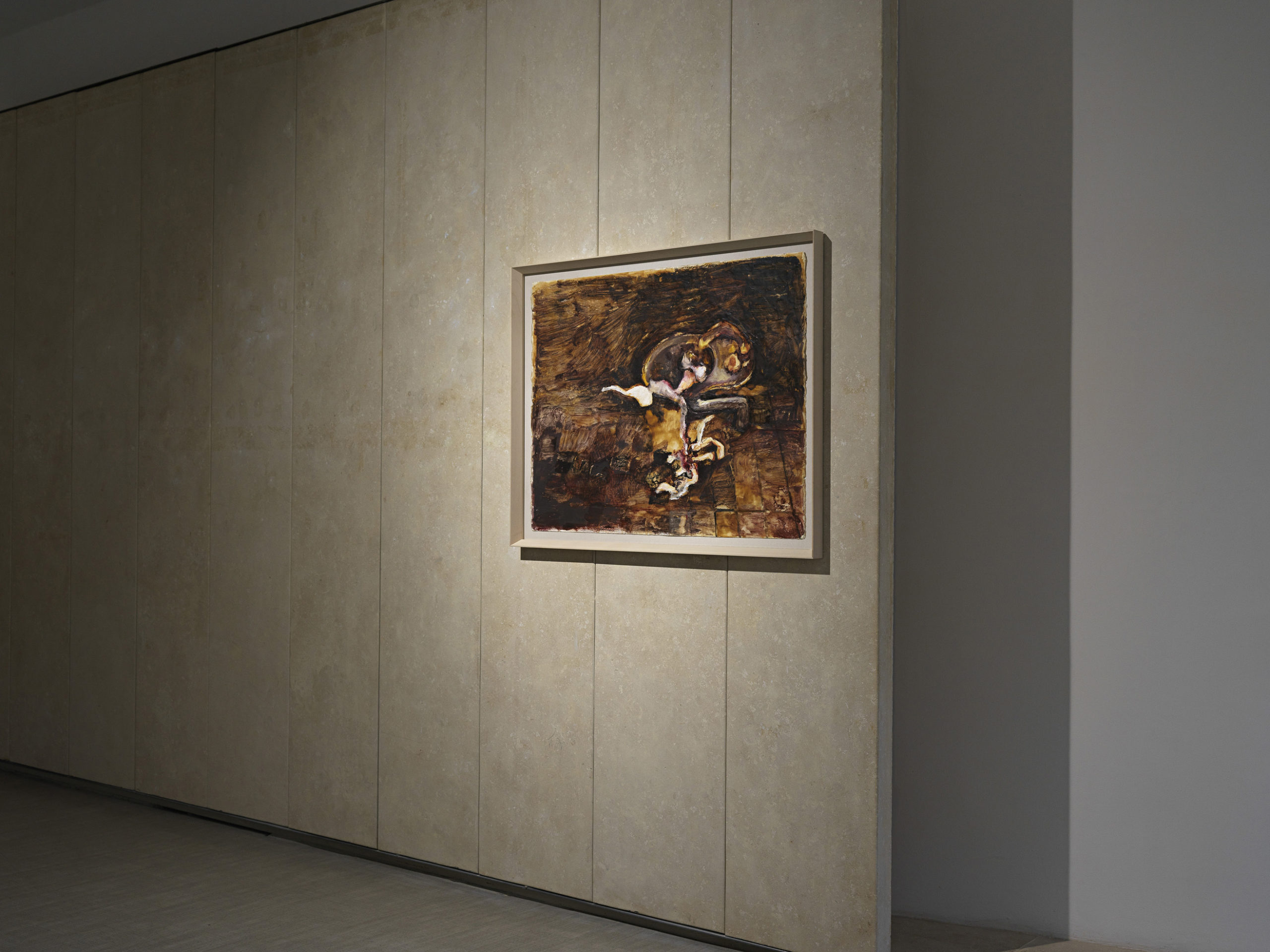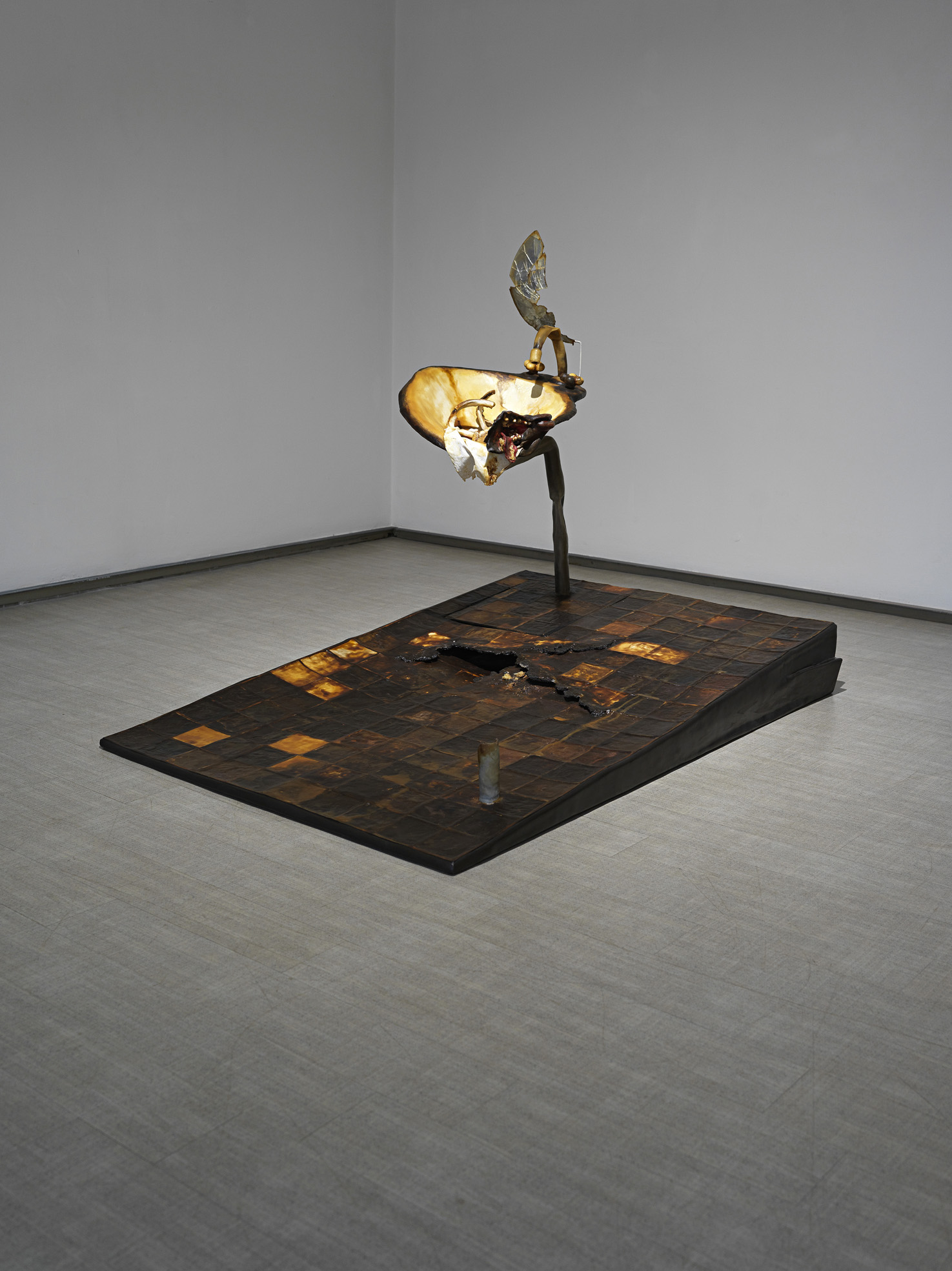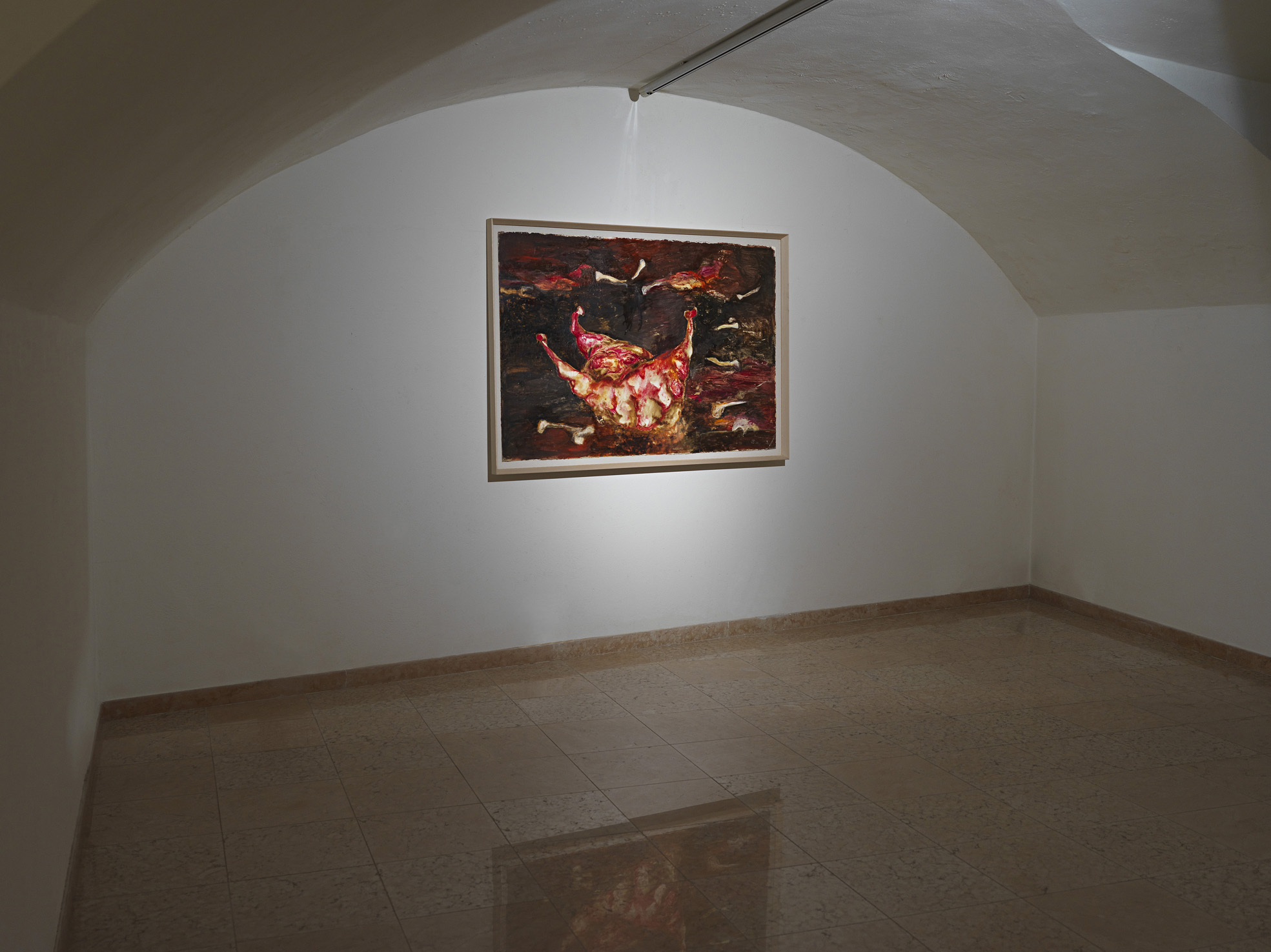Scorci abbandonati dopo una catastrofe, resti fatiscenti e deserti di qualche periferia urbana consumata dalla polvere del tempo: teatri tristi, liturgie funerarie, architetture metafisiche. Silvano Tessarollo titola Interni le sue installazioni frantumate, anticlassiche, prive di ogni ripiegamento nostalgico. Interni, perché non hanno nulla di monumentale, di solenne, di grandioso, quanto invece un che di declassato, rotto, marginale. L’artista non intende cioè ingabbiare le sue drammaturgie dentro forme risolte e chiuse, ma costruire creazioni non compiute, aperte, mutilate. Anche perché, come ha detto Anselm Kiefer, “tutto ciò che facciamo tiene già in sé radicalmente la sua stessa negazione”. Ogni oggetto resta in vita, ma la vita si è irrimediabilmente allontanata da esso.
Ebbene, Tessarollo sembra lavorare proprio su ciò che si allontana e si dilegua; anzi, sembra dare corpo proprio alla sparizione. Non sono infatti gli interni/bagni la messa in scena di un ordine prossimo a naufragare nel nulla? E non sono le gigantesche superfici in resina (coperte di cera, cenere, colori industriali, stoffe consunte) autentiche installazioni del disastro? Ma è ogni singolo elemento, qui, a richiamare un oscuro, illimitato inferno: l’aspetto abietto delle impalcature orizzontali (metà basamento/metà sepolcro), gli accessori per il bagno invariabilmente profanati, pareti e pavimenti assenti o sfondati, quasi a svelare fondamenta occulte. È come se tutto tendesse verso quel luogo dove le immagini si annullano o si mescolano in una metamorfosi infinita e inaccessibile.
Si tratta di cinque lavori realizzati nel 2007 e custoditi in casse “segrete”. Forse per garantire la loro integrità o forse per celare il loro inconfessato e febbrile mistero. Fino a qualche anno prima Tessarollo si era ingegnato attorno ai suoi “Mitici pupazzi” sempre indaffarati in faccende paradossali, come i protagonisti dei cartoon da cui provenivano. Essi si mostravano eccessivi, irriverenti, sconclusionati, ma pure corrotti, imperfetti, incompiuti. Anch’essi cioè, in qualche modo, già ostaggio di quella rovina abissale in cui sono immerse le spoglie desolate degli Interni (o anche le opere dei cicli di Umano è il nostro cielo e di Dies Irae, tutte realizzate nel giro di anni che vanno dal 2004 al 2009). Anzi, i pupazzi li ritroviamo “in carne e ossa”, anche tra questi relitti di mondo, con i loro tratti appesantiti o consumati, i loro colori vistosi, le loro pose caricaturali; maiali scuoiati, teste dilaniate di cani, pennuti ridotti a scheletri danzanti (da cui viene il titolo ironico della mostra Prima che il gallo canti). È vero, sono solo comparse, attori marginali, ma introducono in scena un’atmosfera di sospese ambiguità, tra il tragico e il comico, tra l’ilare e l’inquieto. È come se Tessarollo saggiasse di continuo lo spessore del dramma con l’acido della derisione o attraverso la comicità cercasse di guardare più a lungo il sole accecante del Niente.
A compendio (o annuncio) di tutto, due grandi dipinti su carta (Studio per interno 1 e Studio per interno 5, del 2005): vere acrobazie di oli e cere che fondono figurazione e lirismo. Superfici che sembrano deflagrare, dando l’idea di un moto ascendente, quasi plastico. Collegano lo spirituale e il barbarico, il buio e l’accensione. Si potrebbe quasi dire che siamo di fronte ad un’immagine informale, abitata da energie sotterranee, da vortici che includono ogni elemento, da cataclismi gestuali che conducono verso dimensioni oscure. Infatti niente è più riconoscibile con chiarezza, nessun limite è più rispettato. Così anche i dipinti finiscono per veicolare una trama di linee sfregiate, spezzate. Mimano, in un certo senso, la struttura esplosa degli Interni. Solo che il concetto di processo dissolutivo in essi è portato alla massima potenza. Sta prima e dopo che la distruzione si compia. Forse rivela la distruzione stessa.
English version
Abandoned glimpses following a catastrophe, crumbling and deserted remains of some urban suburbs consumed by the dust of time: sad theaters, funeral liturgies, metaphysical architecture. Silvano Tessarollo titled Interiors for his shattered, anti classical installations, devoid of any nostalgic retreat. Interiors, because they have nothing monumental, solemn, grandiose, but rather something downgraded, broken, marginal. In other words, the artist does not intend to enclose his dramaturgies within resolved and closed forms, but to construct unfinished, open, mutilated creations. Also because, as Anselm Kiefer said, “everything we do already radically contains its own negation”. Every object remains alive, but life has irremediably moved away from it.
Well, Tessarollo seems to work precisely on what moves away and disappears; indeed, he seems to give substance to disappearance. Are not the interiors / bathrooms the staging of an order which is close to being wrecked into thin air? And aren’t the gigantic resin surfaces (covered in wax, ash, industrial colors, worn fabrics) authentic installations of disaster? But it is every single element, here, that evokes a dark, unlimited hell: the abject appearance of the horizontal scaffolding (half base / half sepulcher), bathroom accessories invariably desecrated, absent or broken walls and floors, as if to reveal occult foundations. It is as if everything tended towards that place where the images cancel each other out or mix in an infinite and inaccessible metamorphosis.
These are five works created in 2007 and kept in “secret” boxes. Perhaps to guarantee their integrity or perhaps to conceal their unconfessed and feverish mystery. Until a few years before, Tessarollo had worked around his “Mythical puppets” always busy in paradoxical matters, like the protagonists of the cartoons from which they came. They showed themselves to be excessive, irreverent, inconclusive, but also corrupt, imperfect, incomplete. In other words, they too, in some way, are already hostage to that abyssal ruin in which the desolate remains of the Interiors are immersed (or even the works of the cycles of Human is our sky and of Dies Irae, all realized from 2004 to 2009). Indeed, we find the puppets “in flesh and blood”, even among these wrecks of the world, with their heavy or worn out features, their showy colors, their caricatured poses; skinned pigs, dog-torn heads, birds reduced to dancing skeletons (hence the ironic title of the exhibition Before the rooster crows). It is true that they are only extras, marginal actors, but they introduce an atmosphere of suspended ambiguity to the scene, between the tragic and the comic, between the cheerful and the restless. It is as if Tessarollo was constantly testing the depth of the drama with the acid of derision or trying to look longer at the blinding sun of the Nothing through comedy.
As a compendium (or announcement) of everything there are two large paintings on paper (Study for interior 1 and Study for interior 5, 2005): real acrobatics of oils and waxes that blend figuration and lyricism. Surfaces that seem to explode, giving the idea of an upward, almost plastic motion. They connect the spiritual and the barbaric, the dark and the ignition. One could almost say that we are faced with an informal image, inhabited by underground energies, by whirlpools that include every element, by gestural cataclysms that lead to dark dimensions. In fact, nothing is more clearly recognizable, no limits are respected anymore. So too the paintings end up conveying a texture of scarred, broken lines. They mimic, in a certain sense, the exploded structure of the Interiors. Except that the concept of the dissolutive process in them is brought to maximum power, which happens before and after that the destruction takes place. Perhaps it reveals the destruction itself.
Al seguente link è visibile il catalogo della mostra:

